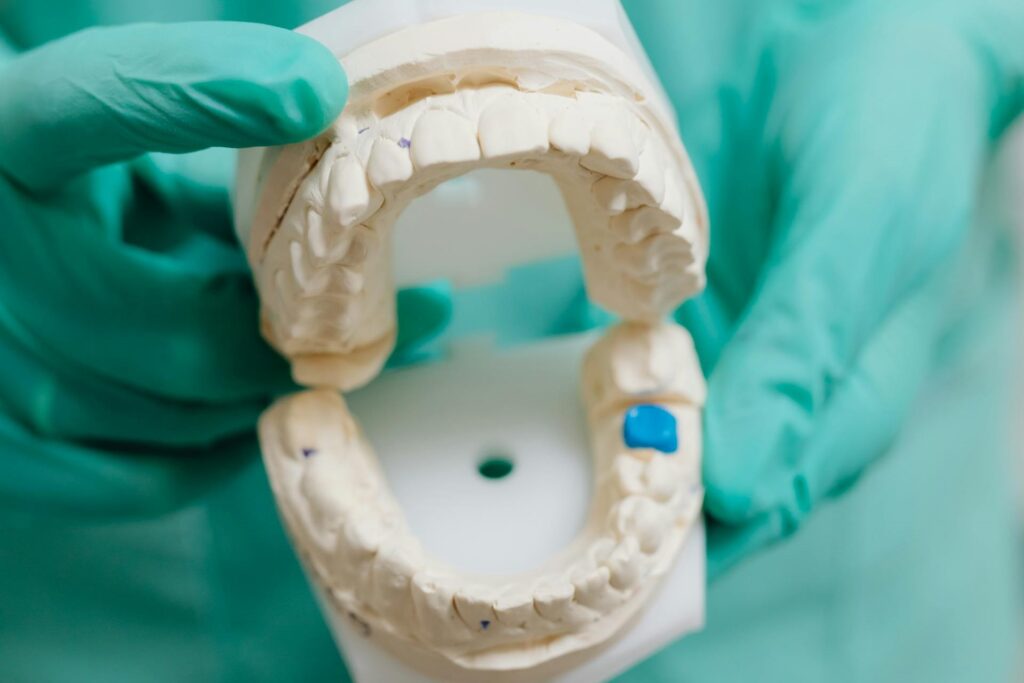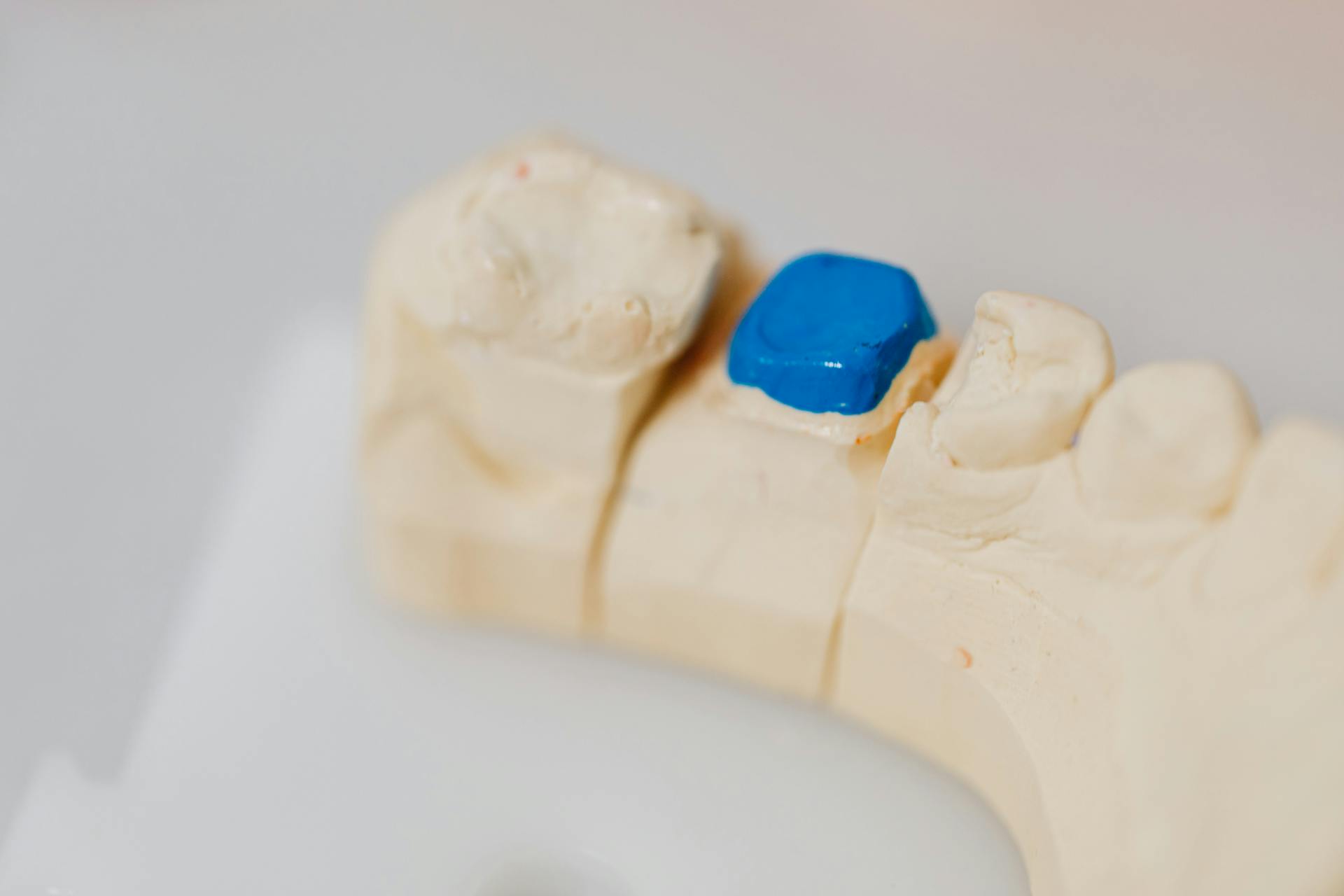
Regarding enhancing one’s smile, crowns and veneers are two popular dental options that can significantly improve both appearance and functionality. While they serve similar purposes, it is important to understand their differences to make the best choice for individual needs.
This article will explore the key differences and similiratioes on crowns vs veneers, the materials used, the amount of tooth preparation required, the coverage each option provides, their longevity, and associated costs. It will also discuss when each option is most suitable, their benefits, potential risks, and essential care tips.
By the end of this discussion, you will have a clearer understanding of which option may be the best fit for your smile transformation.
What Are the Differences Between Crowns and Veneers?

In the field of cosmetic dentistry, the decision between dental crowns and veneers can greatly influence both tooth restoration and overall dental aesthetics.
Dental crowns provide complete coverage for damaged teeth, while veneers present a minimally invasive option for improving the visual appeal of one’s smile.
By understanding the differences between these two treatments, patients can make informed choices regarding their dental care options.
Materials Used
The materials used in crowns and veneers are crucial in determining both their durability and natural appearance. Porcelain veneers are often preferred for their aesthetic qualities, while dental crowns are typically made from stronger materials to ensure long-term functionality.
In the realm of dental aesthetics, various options such as zirconia, resin, and metals are available, each offering unique properties tailored to different patient needs.
- Zirconia crowns, for example, are known for their excellent strength and natural appearance, making them a preferred option for both front and back teeth.
- On the other hand, resin options tend to be more cost-effective and allow for quick customization, which is ideal for those in need of immediate solutions.
Patient comfort is of utmost importance, and advancements in material technology have led to improvements in fit and finish, reducing any potential discomfort during and after the procedure. Ultimately, the choice of material significantly influences not only aesthetics but also the overall dental health of individuals.
Amount of Tooth Preparation
The amount of tooth preparation required for crowns compared to veneers is an essential factor in selecting the appropriate dental procedure. Crowns typically require more extensive alteration of the tooth structure, while veneers take a more minimally invasive approach.
This distinction is significant, as it directly affects both the integrity of the tooth and the overall comfort of the patient. Crowns are often used to address functional issues, such as considerable decay or structural weakness, providing a strong protective covering. However, this can lead to greater enamel loss, which may be a concern for many individuals.
On the other hand, veneers primarily focus on aesthetic improvements while preserving more of the natural tooth structure, allowing for better enamel retention.
During the consultation process, dentists will evaluate the specific needs and preferences of the patient, assisting them in deciding whether the additional tooth alteration required for crowns aligns with their comfort level and long-term oral health goals.
Coverage of the Tooth
The coverage of the tooth serves as a primary distinction between crowns and veneers. Crowns completely encase the entire tooth to address significant damage, while veneers are designed to cover only the front surface, making them particularly suitable for specific cosmetic concerns.
This fundamental difference in coverage significantly influences the restoration options available to patients dealing with various types of tooth damage. For those experiencing extensive decay, fractures, or structural issues, crowns provide a durable solution that restores both functionality and appearance.
On the other hand, veneers are ideal for individuals seeking a noticeable enhancement of their smile without resorting to invasive procedures. They primarily target cosmetic issues such as discolouration, chips, or minor misalignments.
By understanding these distinctions, patients can set realistic expectations regarding the effectiveness and outcomes of their treatments, ensuring their cosmetic goals align with the appropriate restorative approach.
Longevity
When evaluating dental crowns versus veneers, longevity is a key consideration. Typically, dental crowns provide a longer lifespan due to their strength and durability. In contrast, while veneers are cosmetically appealing, they may need to be replaced more frequently.
This difference in lifespan is influenced by several factors, including the patient’s dental care routine, the materials used for each treatment, and individual habits such as teeth grinding or the consumption of staining substances. Proper maintenance, such as regular dental check-ups and diligent oral hygiene practices, is essential in maximising the longevity of both options.
Understanding the comparison between crowns and veneers is important, as patient satisfaction often depends not only on the immediate aesthetics but also on the long-term functionality and durability of these restorations. Selecting the appropriate option can yield significant advantages for both appearance and overall dental health.
Cost
Understanding the costs associated with veneers and dental crown is essential for patients. While veneers might seem like the more affordable option at first glance, it is important to consider the long-term dental expenses and the likelihood of needing replacements, which could make crowns a more economical choice over time.
The materials used can significantly affect the overall price of these treatments, as porcelain and gold crowns are generally more expensive than composite veneers.
Additionally, the treatment options differ; crowns often involve more extensive procedures, which can lead to higher upfront costs. Patients should also take their dental insurance coverage into account, since some plans may offer better reimbursement rates for crowns compared to veneers, adding another layer of complexity to the financial decision.
Ultimately, patient preferences are key in determining which option aligns best with their aesthetic objectives and financial situation, all while maximising the chances for successful treatment.
When Should You Choose a Crown?

Choosing a dental crown is often the most suitable option for patients dealing with significant tooth damage, functional issues, or when a tooth requires extensive restoration to maintain its integrity and support overall oral health.
In instances of severe tooth decay, where a simple filling may not provide the necessary strength to endure biting forces, a crown can effectively encapsulate the affected tooth and restore its function.
For individuals experiencing fractures—whether due to injury or the wear and tear of time—crowns serve to stabilise and preserve the remaining tooth structure.
Crowns also play an important role in cosmetic enhancements, allowing patients to achieve a more aesthetically pleasing smile, particularly when addressing concerns such as discolouration or misalignment.
Before proceeding with the treatment, thorough patient education and clinical evaluation are essential to ensure that the selected approach aligns with the individual’s needs and overall dental health.
When Should You Choose Veneers?
Dental veneers present an excellent option for individuals seeking to enhance their smile aesthetics, particularly in cases of tooth discolouration, minor misalignments, or chips. They offer a quick and effective solution for achieving a smile makeover.
These thin shells, crafted from porcelain or composite resin, not only improve the appearance of teeth but also ensure a high level of comfort for patients during the application process. For those dealing with cosmetic issues such as gaps between teeth or uneven surfaces, veneers can truly be transformative, helping to restore confidence and promote a more engaging smile.
The effectiveness of this treatment largely stems from the minimal invasiveness required, allowing individuals to achieve their desired results without undergoing extensive dental procedures. Ultimately, for anyone striving for a radiant smile, veneers provide a versatile solution that combines aesthetic appeal with practical benefits.
What Are the Benefits of Crowns and Veneers?
Both crowns and veneers provide distinct advantages that can greatly enhance a person’s smile while also improving oral health. This makes them valuable choices in the fields of cosmetic and restorative dentistry.
Improved Appearance
One of the primary advantages of crowns and veneers is their remarkable ability to improve the visual appearance of teeth. This enhancement allows patients to achieve a brighter and more uniform smile, which can significantly boost their confidence.
For many individuals, the transformative effects of these dental solutions extend beyond mere aesthetics; they play a crucial role in shaping social interactions and self-perception. Case studies demonstrate that patients frequently express a newfound eagerness to smile freely in photographs and during conversations.
Specifically, feedback highlights that precise shade matching in crowns and veneers is essential for achieving a natural look that harmonises with the individual’s facial features.
These enhancements not only improve visual outcomes but also foster lasting smile confidence, enableing patients to embrace their authentic selves with pride.
Restoration of Function
Crowns and veneers serve a dual purpose: they not only enhance the aesthetics of one’s smile but also restore essential tooth function. These treatments effectively address issues such as bite alignment and overall oral health.
These restorative options are vital in correcting functional problems that may arise due to damage or decay. For example, crowns provide much-needed strength to weakened teeth, enabling them to withstand the pressures of daily chewing without the risk of fracture. On the other hand, veneers can subtly realign teeth, thereby improving overall bite dynamics.
When combined with other solutions like dental bonding, both treatments contribute to the longevity of dental work, ensuring that proper tooth spacing and alignment are maintained over time. As a result, individuals can enjoy improved functionality and a healthier mouth for many years.
Protection of Damaged Teeth
Both crowns and veneers serve as protective barriers for damaged teeth. Crowns offer more comprehensive protection by covering the entire tooth, while veneers focus on shielding only the front surface from external factors.
This dual approach not only helps maintain the structure of the tooth but also plays a significant role in preserving enamel health, which is crucial for preventing further decay and damage. Patients from various demographics, whether they are looking for aesthetic improvements or requiring restorative care, can benefit from these options.
By effectively sealing the tooth, these treatments also contribute positively to gum health, as they minimise the risk of bacteria infiltration that can lead to periodontal issues. Ultimately, both crowns and veneers provide a harmonious blend of strength and beauty, ensuring that smiles remain both healthy and vibrant.
What Are the Risks and Side Effects of Crowns and Veneers?

Dental crowns and veneers offer significant benefits, but patients should be aware of potential risks and side effects to ensure the best possible outcomes. For example, some individuals may experience tooth sensitivity after placement, particularly if the underlying tooth structure has been extensively prepared.
Additionally, improper care of dental work can lead to issues such as infection or reduced durability over time. Maintaining good oral hygiene and attending regular dental check-ups are essential for preserving both the function and appearance of these treatments.
For patients considering broader smile transformations, combining crowns or veneers with orthodontic options like Invisalign may require additional aftercare to ensure seamless integration and long-lasting results. Being well-informed about these aspects can help patients enjoy a confident and healthy smile.
Tooth Sensitivity
Tooth sensitivity is a common side effect that some patients may experience after receiving crowns or veneers. This sensitivity often results from the dental procedure’s effect on the tooth structure and surrounding enamel.
Various factors can contribute to this heightened sensitivity, including exposed dentine, irritation of the gums, or changes in the nerve responses within the tooth. To help individuals manage this discomfort effectively, several practical tips can be considered.
- First, maintaining a routine of gentle oral hygiene practices is beneficial. Using a soft-bristled toothbrush and fluoride toothpaste can make a significant difference.
- Additionally, it is wise to avoid extreme temperatures and acidic foods in the initial weeks following treatment, as this can help ease sensitivity.
- Finally, regular dental check-ups during the treatment period are essential for monitoring any ongoing issues, ultimately enhancing patient comfort and ensuring the longevity of the crowns or veneers.
Possible Need for Replacement
Both crowns and veneers may need to be replaced over time due to various factors, such as wear and tear, individual oral hygiene practices, and the materials used. It is essential for patients to understand the longevity of these treatments and their maintenance requirements.
Several factors can influence the lifespan of these dental restorations, including the quality of the initial placement and the ongoing dental care received. Patients should be aware of habits such as teeth grinding or biting on hard objects, as these can lead to accelerated deterioration.
Routine dental check-ups are crucial for identifying potential issues early on, enabling timely repairs and adjustments. Additionally, insurance coverage can vary, which may affect how often patients can afford replacements or necessary treatments.
By committing to diligent oral hygiene and regular professional care, individuals can significantly extend the life of their crowns and veneers, ensuring a lasting and healthy smile.
Potential for Infection
The potential for infection is a valid concern with any dental procedure, including the placement of crowns and veneers, particularly if post-treatment care and oral hygiene are not sufficiently maintained.
This is why it is crucial for patients to prioritise their oral health following such treatments. Effective post-treatment care involves diligent brushing, flossing, and the use of antimicrobial mouthwash to minimise the risk of bacteria build-up.
Regular dental check-ups are also essential in this preventive strategy, as they allow for early detection of any issues and help ensure the longevity of dental aesthetics. Furthermore, patient education plays a vital role; understanding the importance of maintaining these enhancements can lead to healthier gums and teeth, ultimately preserving the investment in a beautiful and functional smile.
How Do You Care for Crowns and Veneers?
Taking proper care of crowns and veneers is crucial for ensuring their longevity and maintaining overall oral health. This involves committing to diligent oral hygiene practices and scheduling regular dental check-ups to monitor their condition.
By doing so, individuals can effectively preserve their dental work and promote a healthy smile.
Oral Hygiene
Maintaining excellent oral hygiene is essential for the health of both crowns and veneers, as it helps prevent plaque build-up and reduces the risk of complications such as decay and infection. To ensure the longevity and aesthetic appeal of these dental treatments, patients must adopt rigorous daily care routines.
This includes brushing teeth at least twice a day with a soft-bristled toothbrush and fluoride toothpaste, which effectively removes food particles and plaque. It is important to use a gentle technique while brushing to protect both the crowns or veneers and the surrounding gum health.
Flossing daily is equally vital, as it reaches areas between the teeth that a toothbrush cannot, ensuring that dental bonding remains intact and harmful bacteria are eliminated.
Additionally, incorporating an antibacterial mouthwash can further enhance oral hygiene by rinsing away any remaining debris and providing extra protection against gum disease, thereby reinforcing the importance of comprehensive care practices for patients.
Regular Dental Check-ups
Regular dental check-ups are vital for monitoring the condition of crowns and veneers. These visits allow dentists to evaluate their integrity and perform any necessary maintenance to ensure long-term success.
Such routine appointments play a significant role in the overall health of dental restorations. They enable practitioners to conduct a comprehensive clinical evaluation of both the materials used and the surrounding tooth structure. During these examinations, patients can expect a thorough check for potential wear or damage, as well as an assessment of alignment and aesthetics.
Ensuring comfort during these evaluations is a priority, with techniques in place to make the experience as pleasant as possible.
These assessments not only enhance the effectiveness of treatments but also help identify any issues early on. This proactive approach contributes to prolonging the lifespan of crowns and veneers, all while maintaining a beautiful smile.
Which Option is Best for You?

Determining whether crowns or veneers are the most suitable option involves several considerations, such as the condition of your teeth, the aesthetic results you hope to achieve, and your personal preferences regarding dental treatment.
It is important for individuals to carefully assess their specific dental needs and consult a knowledgeable dentist who can offer tailored recommendations. Factors such as the extent of tooth damage, the presence of decay, and the need for structural support will significantly influence this decision-making process.
By engaging with dental professionals, you can receive a thorough clinical evaluation that takes into account all relevant aspects, including patient demographics and unique circumstances.
Additionally, insights from patient experiences with different treatments can be invaluable in understanding the practical differences between crowns and veneers, ultimately leading to a more informed choice that aligns with your expectations.
Frequently Asked Questions
What are crowns and veneers?
Crowns and veneers are cosmetic dental treatments used to improve the appearance of teeth. They are both custom-made and placed over the natural tooth, but they serve different purposes.
What is the main difference between crowns vs veneers?
The main difference between crowns and veneers is the amount of tooth coverage. Crowns cover the entire tooth, while veneers only cover the front surface of the tooth.
In what situations would crowns be the better option?
Crowns are typically recommended for teeth that are severely damaged or have undergone root canal treatment. They provide more protection and support for weakened teeth.
When would veneers be a more suitable choice?
Veneers are a better choice for purely cosmetic issues, such as discoloration, minor chips or cracks, or gaps between teeth. They are less invasive and require less tooth preparation compared to crowns.
What is the procedure like for getting crowns or veneers?
The process for getting crowns or veneers is similar. Your dentist will first prepare your natural tooth by removing a small amount of enamel. Then, they will take impressions of your teeth to create custom restorations. The final step is to bond the crown or veneer to your tooth using a special dental cement.
Which option is more cost-effective in the long run?
While both crowns and veneers can be costly upfront, crowns may be more cost-effective in the long run due to their durability. Veneers may need to be replaced more frequently, especially if they are exposed to excessive wear and tear.






